My feature this week relates to a well established golf links in County Meath. This is the first article I have written for TurfPro about a links course and not before its time. The course is Laytown and Bettystown Golf Links.
The first golf shot in the vicinity of Laytown & Bettystown Golf Club, in the late 1880s, was played by a retired Scottish banker, namely Tom Gilroy. He was a fanatical golfer, was a member of Royal Dublin at the time and played off a handicap of plus 4. His desire for golf was so great that he decided to create a few holes on the land that he owned in the area. He created four holes but as the land there was plagued with rabbits, Gilroy eventually abandoned his private course and headed across the River Boyne to Baltray, where he helped found County Louth Golf Club in 1892. Nothing much happened until March 1909 when another golfing fanatic, George Daly, an auctioneer, organised a meeting. The meeting was held with a view to forming a club, giving it a name and finishing off Mr Gilroy’s work. The name decided upon was Laytown and Bettystown Golf Club. The course enjoys splendid views of the coast including the Mourne mountains in County Down.
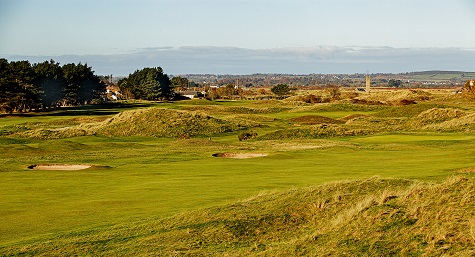
A view of Laytown and Bettystown golf links in glorious winter sunshine
A lot has happened over the club's 112 year history and boasts international golfer and former Ryder Cup player, Des Smyth, as one of its members. Des, in association with his company, Des Smyth Associates, redesigned some of the holes some years back.
The head greenkeeper at Laytown and Bettystown is Stephen Hoey. Stephen began working there many years ago, thirty six in fact, as an eighteen year old apprentice. He had just finished doing an agricultural course at nearby Warrenstown College, which has sadly since closed.
Stephen quickly found his feet at the club. Having a family background in farming and an agricultural qualification helped a lot. In 1988, within three years of beginning work at Laytown and Bettystown, he was made head greenkeeper. The club was even responsible for him getting married to his wife, Stella. Stella was the club secretary when Stephen started working there. It wasn't long before they became an item and they are now happily married with two children.

Head greenkeeper, Stephen Hoey
Many of the original greens around the course were cut out from the natural shape of the terrain. Some of the newer greens were built using the sand within the course. As Laytown and Bettystown is a links course, it is naturally free draining, so drains were not needed to be installed. However, some of the low lying areas around the course tend to get a little soft under foot so extra sanding is given to these areas throughout the year. On the day I arrived, Stephen had just finished sanding some of the damper fairways.
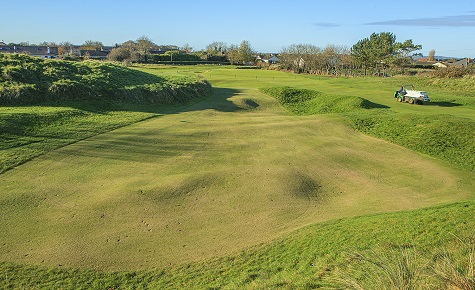
Some of the lower fairways need regular sanding
2013 was a year that changed the direction of the course maintenance forever. It was the year when the club invested in new machinery and made the brave move of becoming more sustainable and environmentally friendly. Around that time the word 'sustainability' was on every greenkeepers lips. What exactly did this new word mean and how could it be implemented? I asked Stephen how did all this come about?
"We wanted to reduce the amount of fungicide and fertiliser applications on the course", said Stephen. "We got involved with the newly established Irish Links Iniative (ILI), which was formed by the late Brian Coburn. Brian felt that links courses around Ireland were losing their character. Issues that effected us were many, including maintaining true fescue greens, rough management and even coastal erosion. I believe in the ethos of the ILI and I attend their Spring and Autumn workshops. We even hosted a Spring workshop ourselves". The ILI was formed to address the issues that Stephen mentioned. There are almost sixty links courses located in Ireland, so these issues affect a lot of clubs here. To put it another way, around one quarter of the world’s links courses are located in Ireland.
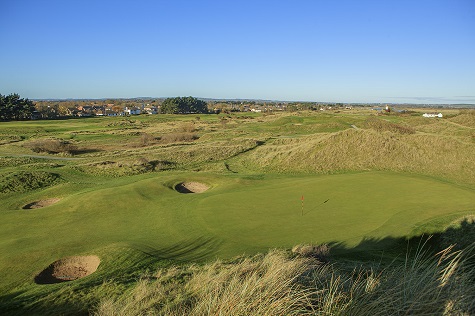
Since 2013 the course has become more sustainable with fertiliser and fungicide applications greatly reduced
Becoming more sustainable and environmentally friendly was not an easy change for Stephen. The first two years were challenging. "I had a good committee working with me and we employed the services of an agronomist", he said. However, having the ground staff and committee on board is one thing. Selling the idea to the members, and there are over 1100 of them, was a different matter. "I gave a talk about the benefits of this strategy during an information day to our members and they soon bought into the idea. We made the bold decision of reducing our fertiliser inputs and to stop using fungicides altogether," continued Stephen. "When we got outbreaks of fusarium it was hard to resist getting the sprayer out to knock it back but, after a while, I noticed something extraordinary. The fusarium mainly attacked the annual meadow grass while the fescue was left relatively unscathed. Of course this left a lot of bare areas on the greens so we quickly began overseeding with fescue. This was the toughest period, as the greens were not looking their best. But we stuck with the plan".
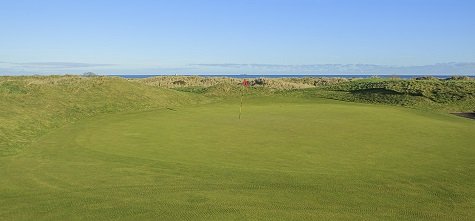
Fescues are now thriving on the greens such as the 12th green
Stephen certainly did do a lot of overseeding, as much as ten times every year in the beginning. This is reduced to around four times a year now. Even still, that's a lot of grass seed. The same amount of money was spent on seed as on fungicides. It was not only the greens that are overseeded. The aprons, tees and fairways get their share of seed as well. A stitch seeder is hired every year to overseed the fairways. The results of this strategy is paying dividends today. The greens are now mainly covered in fescue. "I'm delighted with the results and it's got to the stage now that I almost welcome a fusarium outbreak because I know it will kill off whatever annual meadow grass we have", said Stephen. He recalls an amusing moment when he was playing golf on a parkland course with some greenkeeping colleagues. A conversation began about diseases, what fungicides were used and how often. When Stephen was asked what he uses he replied "I use fusarium to treat my greens". That caused a lot of bewilderment and his colleagues couldn't believe that he didn't use any fungicides at all.
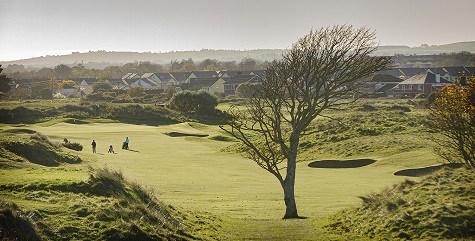
A view of the 7th hole
The height of cut of the greens is now 4mm in Summer and 5mm in Winter. I say now because they used to be cut at 3mm in Summer. With continuous management of the greens it is Stephens wish to increase the mowing height even more. Combine this with the zero fungicide applications and low fertiliser inputs, the course is well on its way to being fully sustainable. No granular fertiliser is used at all, only liquid feeds.
Topdressing is done when necessary. One of the advantages of a links course is that the sand can be sourced on site and is freely available, as is the case at Laytown and Bettystown. The sand is used, not only for topdressing, but to top up the bunkers as well.
Selective herbicides were used to help eliminate perennial ryegrass on the greens and aprons. Next year Stephen hopes to extend this treatment to the fairways as well. When I walked the course with Stephen the greens and aprons were indeed thriving with fescues.

Steeped in history. An old lighthouse and lightkeepers cottage is located beside the 13th fairway with an historic tower in the background
Stephen has a great team of ground staff working with him. Including Stephen, there are five full time greenkeeping staff at Laytown and Bettystown. If you add their years of service together, it comes to an amazing 120 years, which shows the loyalty and dedication they have to the club.
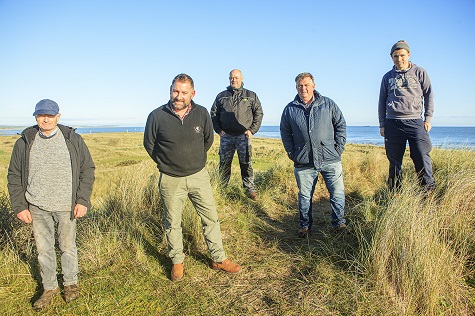
The greenkeeping staff from left: Patrick McGivney, Jack Black, Colin Sweeney, Stephen Hoey, Eamon Reynolds
Investment in the course is continuous. Only last month a new hybrid fairway mower, with groomers, was purchased. Plans are in place to upgrade the irrigation system to include more sprinklers on the fairways. During the Summer drought of 2018 some parts of the fairways dried up a lot and took a long time to recover. Adding more sprinklers should help combat future drought problems but, in the meantime, wetting agents are applied to the fairways around three times a year. The use of wetting agents is becoming more important, especially on links courses such as Laytown and Bettystown. "It's crazy when you get temperatures of 19 degrees at the end of October. The ground right now is pretty dry and the water table is lower than normal", said Stephen, as we both stood on one of the fairways in the middle of November.
I mentioned earlier about the course becoming more sustainable. Laytown and Bettystown is probably more sustainable than most clubs as they have 8 acres of ground where they grow their own turf. This is used for repairs and for revetting the 64 bunkers around the course. Revetted bunkers are a typical feature on links courses.
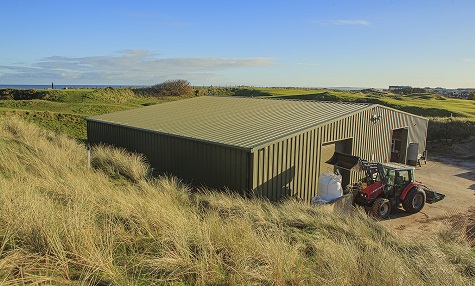
The maintenance facility is well hidden within the dunes
During the lockdown of 2020 many projects were taken on. More rubber pathways, leading to the tee boxes, were laid. Treated oak sleepers were bought and engraved to use as signage around the course. Many bunkers were revetted, as well as replacing worn steps leading to tee boxes.
A lot of wild flora, specific to links courses, can be found throughout the course. Flowers such as orchids, violas and cowslips can be seen in abundance. To encourage native flora, the rough area that is not mown gets a once off yearly treatment at the end of October. These areas are cut, scarified (to reduce thatch) and the clippings removed. This encourages the native flora to thrive.
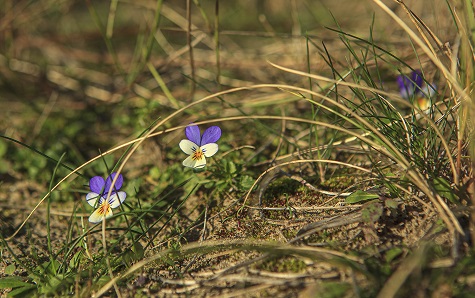
Wild flora are thriving especially in the rough areas
When I walked with Stephen around the links at Laytown and Bettystown, I knew I was in a special place. Links courses are fragile environments and must be looked after with care and sensitivity. After all, it was on a links course, that the first game of golf took place many centuries ago. They need to be in the hands of capable people, such as Stephen and his staff, who know what they are about. Here's to the club’s next 112 years.
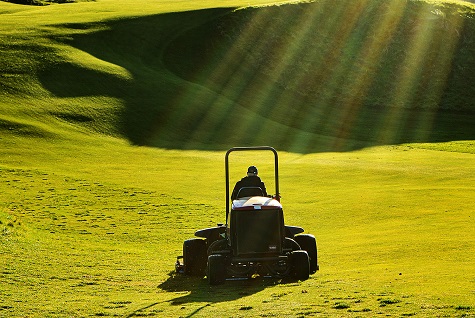
Divine intervention. Heavenly beams of light shine on Patrick McGivney as he mows one of the fairways